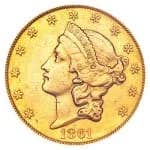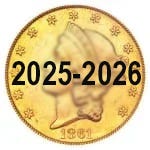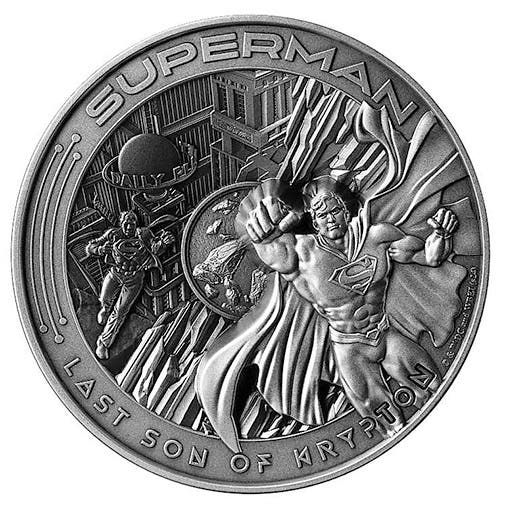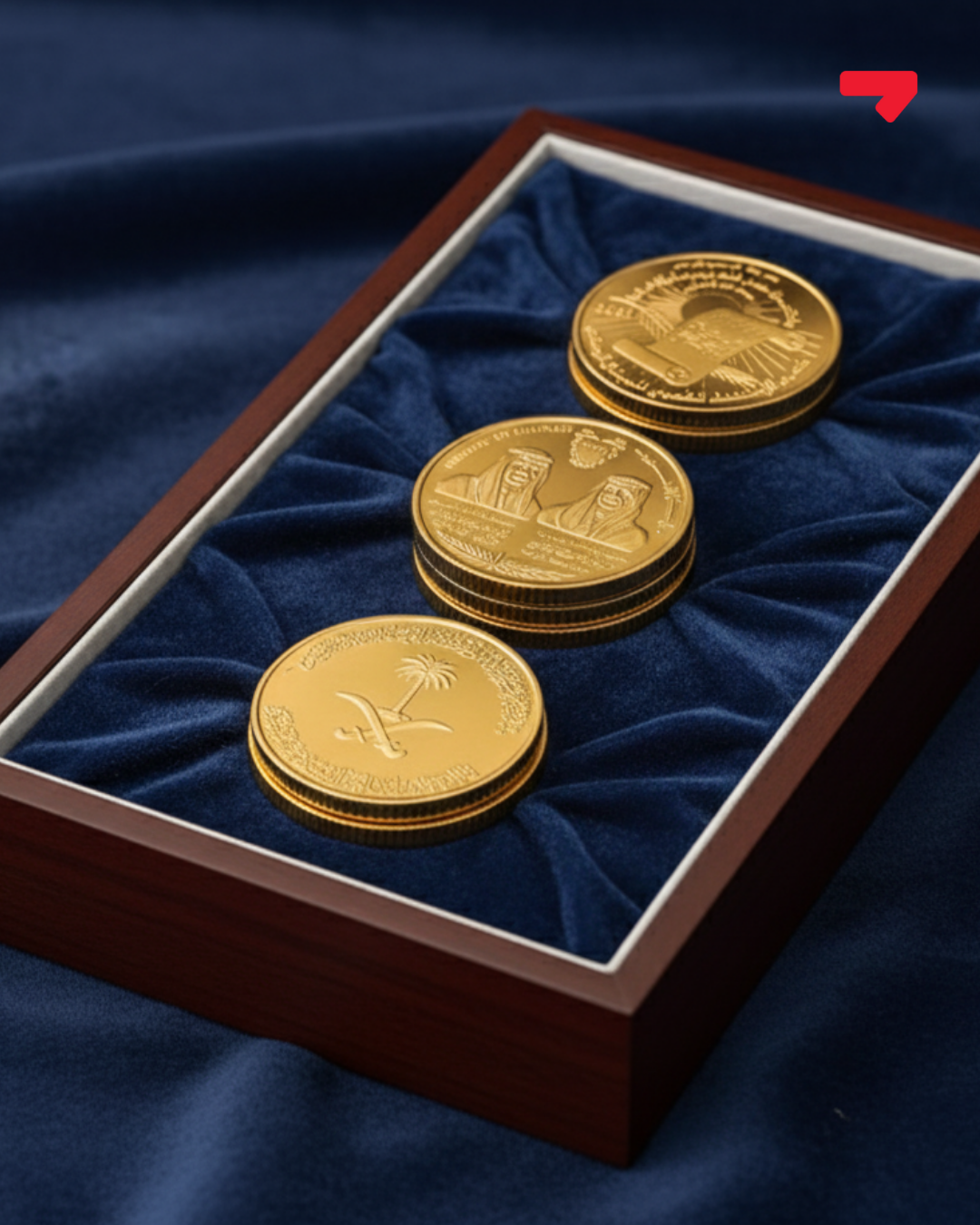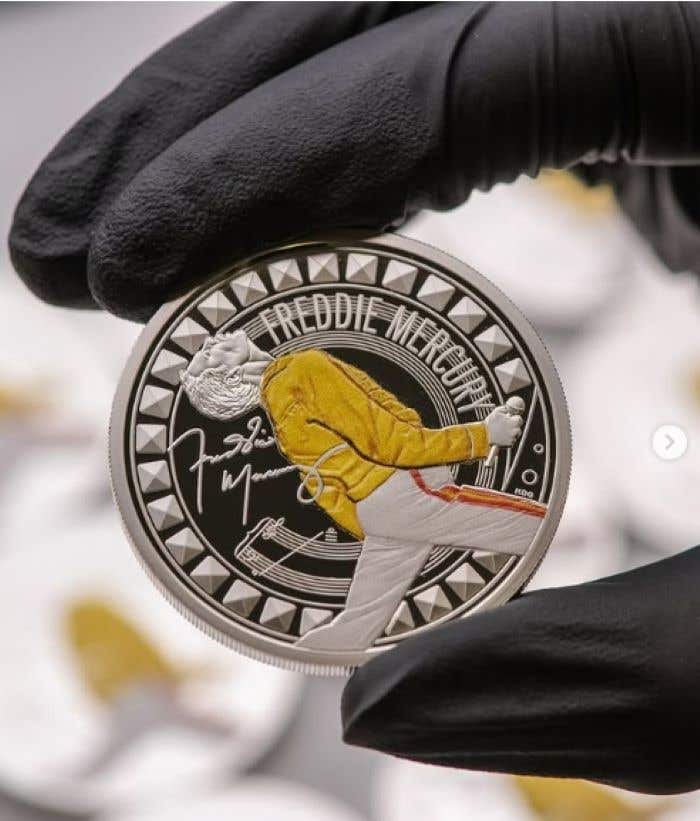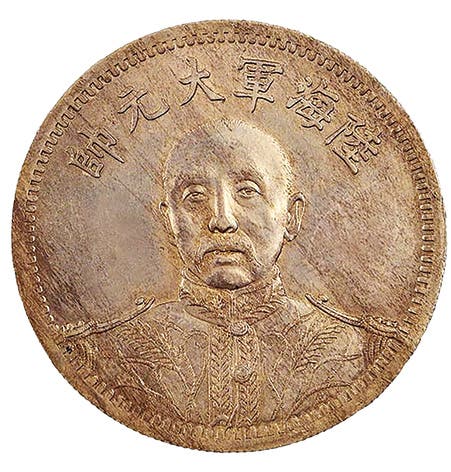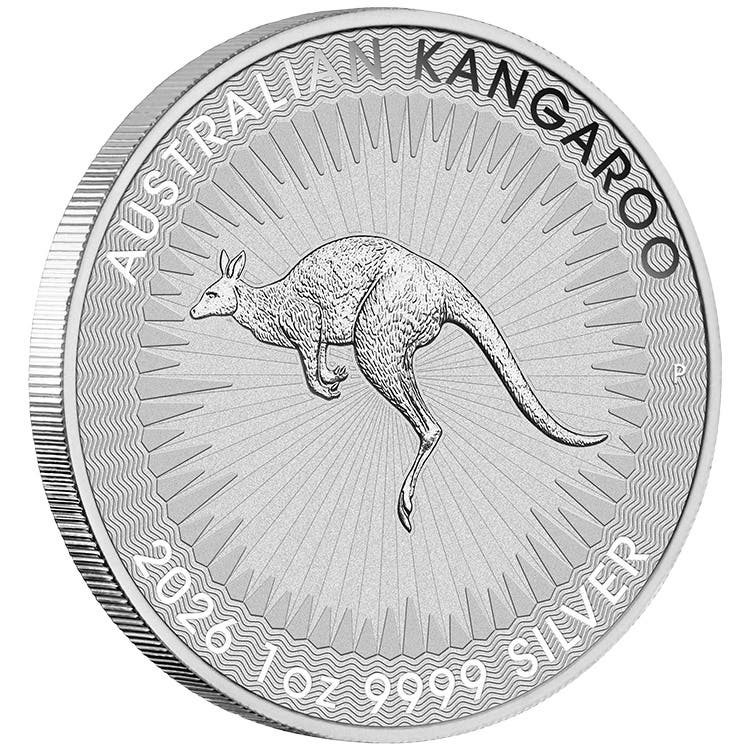Coin Profile: The Royal Tour Revisited
The Royal Canadian Mint’s newest 5-ounce silver coin brings Emanuel Hahn’s 1939 map of Canada to life—etched with over 1,600 incuse lines from his original sketch.
This past June, the Royal Canadian Mint (RCM) issued a 5-ounce $50 silver coin bearing an incuse depiction of a hand-drawn sketch of Canada by Emanuel Hahn, a German-born sculptor who moved to Canada as a child. The RCM struck 1,350 coins on thinner, wider 5-ounce silver planchets for the release.
Responsible for a number of famous Canadian coin designs (reverses of the “Bluenose” Canadian dime and “Voyageur” dollar), Hahn drafted the reverse of the medallions issued in 1939 by the RCM that celebrated the Royal tour of Canada (May 17–June 15) by King George VI and Queen Elizabeth. The purpose of the event was to shore up North American support for the imminent conflict in Europe, which exploded months after their journey concluded that year. Hahn’s design depicts a map of Canada with a line tracing the tour’s route.
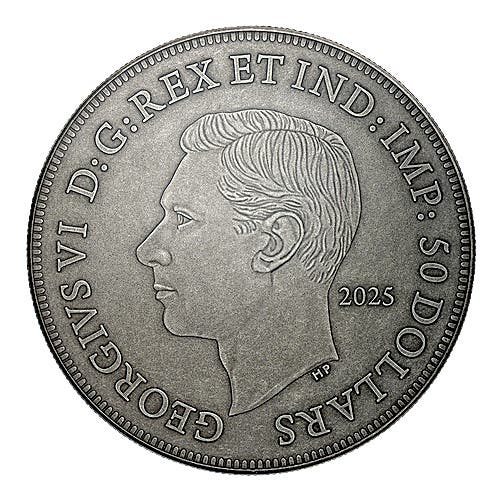
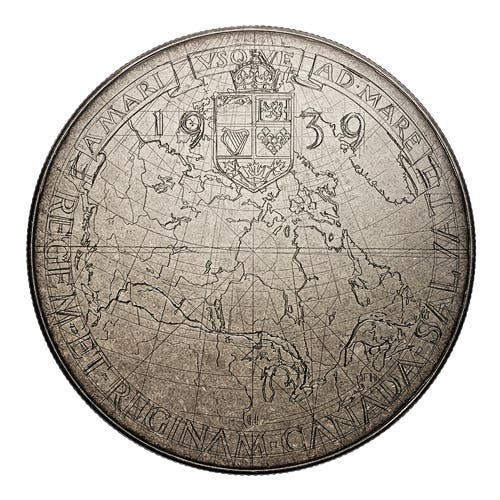
Photograph courtesy of the Royal Canadian Mint.
According to a brief online piece on the medallions published by the Calgary Numismatic Society, the RCM issued “77 mm presentation medals in gold, silver, and tombac, 38 mm bronze and silver medallions for sale to the public… and a 25 mm bronze medallion which was distributed to Canadian school children.” The small bronze versions are quite common and a regular sight in world coin dealers’ inventories.
The RCM also marked the occasion with a commemorative silver dollar depicting the Canadian Parliament building, for which Hahn designed the reverse. The obverses of both the silver dollar and medallions were designed by Percy Metcalf, whose bust of George VI has appeared on U.K. and Commonwealth coinage since 1937. The medallions’ obverse depicts conjoined busts of the King and Queen.
The 2025 5-ounce silver coin has taken as its theme a sketch produced by Hahn during the drafting process for the 1939 medallions. The original sketch is held in the National Currency Collection at the Bank of Canada.
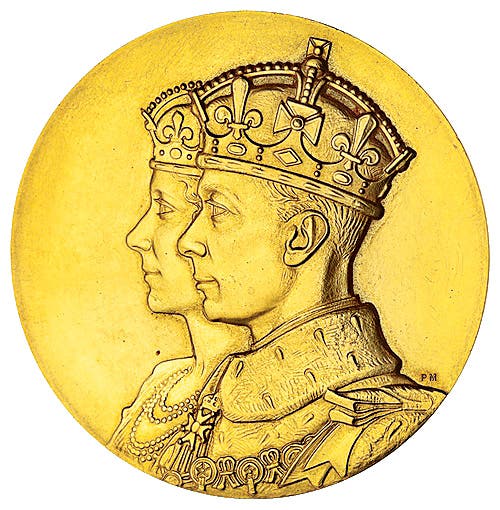
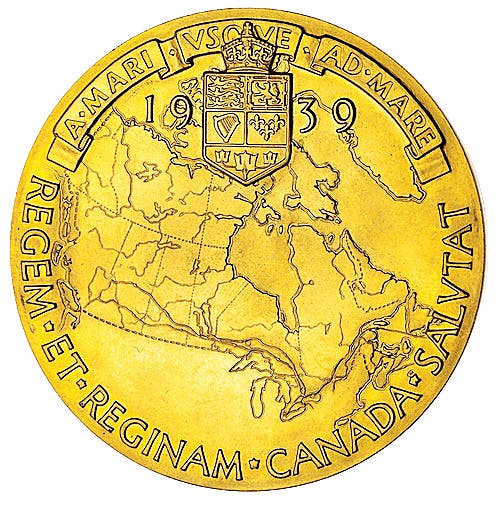
Photograph courtesy of Spink.
According to the RCM, the incuse engraving traces the Royal tour from “sea to sea,” including over 1,600 lines from Hahn’s drawing, the lettering guidelines surrounding “REGEM-ET-REGINAM-CANADA-SALVAT” which was later revised to “REGEM-ET-REGINAM-CANADA-SALVTAT” (Canada salutes the King and Queen) for the final design, and the paper folds that mark Hahn’s hand-drawn map of Canada. Atop the coin is the former crest of Canada and the year 1939.
The issue itself is thinner than many other 5-ounce silver coins produced by the RCM, allowing for a 50% increase in diameter that provides, in the RCM’s words, “more space for art.” The coin sports an antiqued finish, and its obverse shows Thomas Humphrey Paget’s bust of George VI. The legends are as they appear in 1939; the 2025 date sits to the lower-right of George VI’s bust, and the denomination accompanies the Latin text. The obverse design elements are struck intaglio, in contrast to the reverse.
This coin is the second in a series honoring Hahn’s work. The previous issue also commemorates Hahn’s 1939 sketches by featuring his original drafts for the commemorative “Parliament” silver dollar.
You may also like:

